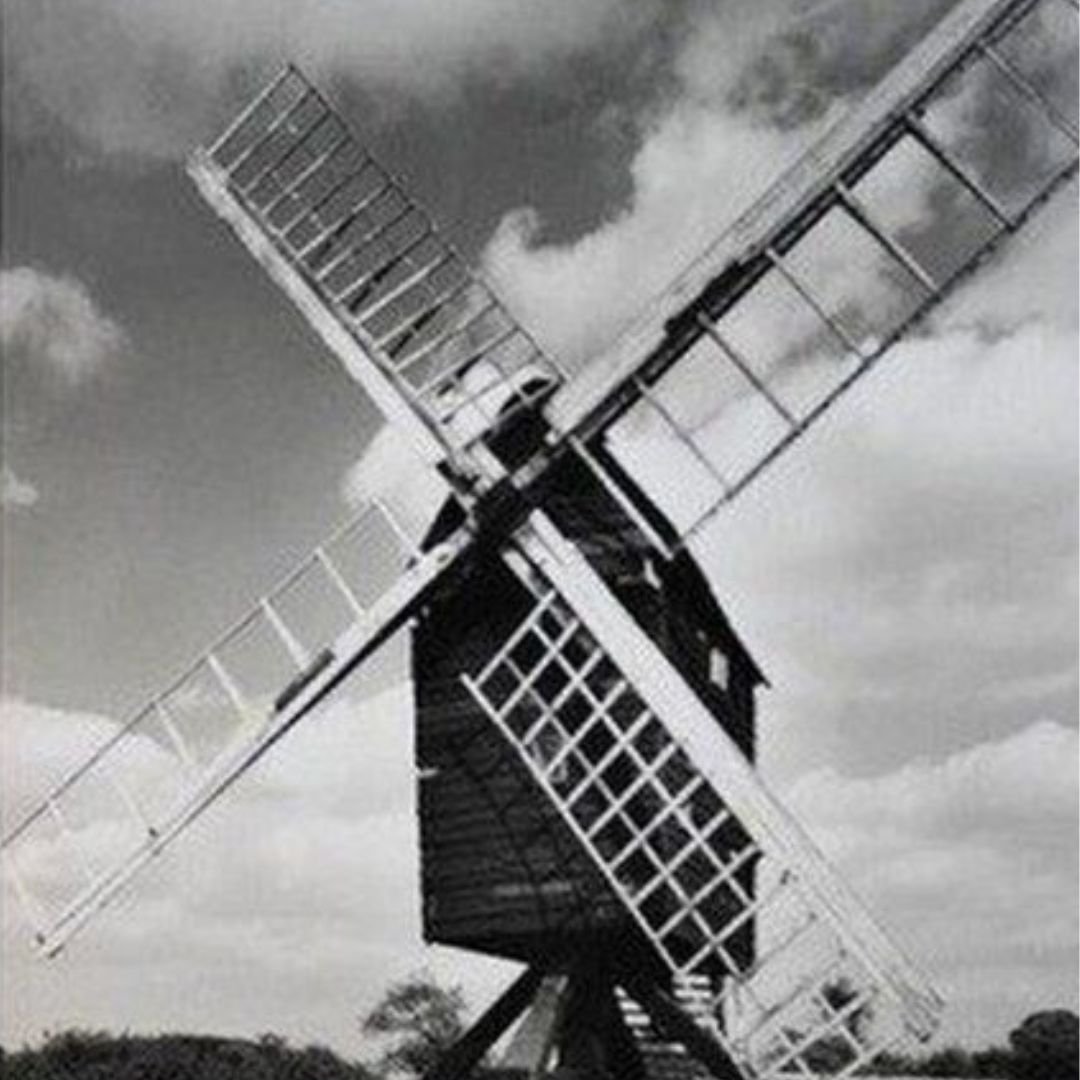Bourn Windmill: Oldest Windmill in England
Bourn Windmill is the oldest windmill in England and is designated as an Ancient Monument.
Perched in lovely countryside to the west of Cambridge it is owned and cared for by local charity Cambridge Past, Present & Future.
Bourn Mill is an open trestle post mill; the entire weight of the body is supported on a central post, which is then supported by a trestle.
The sails of the mill have to face squarely into the wind and to achieve this the entire mill is rotated around the central post – a surprisingly easy, but dramatic, task for two or three people.
There are only around 50 trestle post mills left surviving in the UK, 5 of which are in Cambridgeshire.
The earliest written record is from 1636, but this style of mill has barely changed from the 13th century, so it may be older.
In 2021, scientists attempted to age the timbers in the mill and concluded that the tree that provided the huge timber for the main post in the mill was cut down during 1513-49, making it the oldest wood in any mill in the UK.
Over the centuries, the mill has looked out over a changing landscape.
The first grain to be brought here would have been grown in medieval open fields, and arrived by packhorse and cart along the track through ‘Mill Field’.
In 1806, the open fields were enclosed, and a new landscape of small hedged fields was created.
Changes continue today, with the new community of Cambourne taking its place within the historic landscape of Bourn Mill and linked to the mill by footpath.
The mill changed hands many times over the last four centuries, the first recorded owner was John Cook, who sold the mill in 1636 to Thomas Cook of Longstowe.
By 1701 the mill was owned by John Bishop, a baker, grinding grain for his own bakery.
The family owned several mills in the area. In 1741 his grandson, Richard Bishop, was killed when one of the mills blew down as he struggled to turn the sails out of high winds.
In violent storms the miller has to carefully judge the position of the sails to prevent them pulling on the wooden gears and brakes, which might lead to fire through friction.
Fire is a big risk in wooden mills, too.
Despite this accident, the mill stayed linked to the Bishop family until 1875, and you can see the initials of some Bishop family members carved into the side timber of the interior of the mill.
The last miller at Bourn was George Papworth, whose father was the landlord at ‘The Fox’ in Bourn. In 1926 the introduction of a paraffin engine in the barn made the mill redundant, and it was sold for £45.
Traditionally, Millers spent the absolute minimum necessary to continue the operation of their mill, often resorting to straps and plates which were more in the nature of bandages than cures for ailments.
As a result, inside the mill much of the fascinating historic fabric is there for us to see today.
There is a beautiful model of the mill in the Science Museum collection.
Today, the scheduled monument is now owned and cared for by local charity Cambridge Past, Present & Future.
Bourn Windmill has recently re-opened after being closed for three years for essential restoration works, the exterior of Bourn Windmill can be visited at any time.
You can see inside the mill and see the mill in action at one of their open days on five summer Sundays between May and September.
The mill is located off Caxton Road, Bourn CB23 2SU between the villages of Bourn and Caxton - there is a small car park close to the mill which is open from dawn to dusk on Caxton Road.
The landmark has great reviews on TripAdvisor, one recent visitor said: “Beautiful location and very interesting to learn about the history of the mill as well as to see how it works.
”We were welcomed by a very friendly employee and then had a great tour with the tour guide, who was full of information and really engaged with us. Highly recommended.”
Another person added: “We had a great time here today seeing the mill working is well worth the visit children get to see loads of diffrent things bring food and drink as there isnt anything there parking is very limted.”
If you enjoyed this blog post, please follow Exploring GB on Facebook for daily travel content and inspiration.
Don’t forget to check out our latest blog posts below!
Thank you for visiting Exploring GB.
















